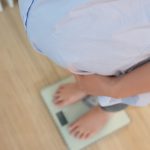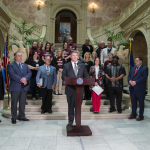When talking about health, where you live matters.
To illustrate this point, former University of Pittsburgh Graduate School of Public Health Dean Bernard Goldstein, M.D., charted several key health factors for the Gulf Coast during his talk Tuesday to open a session on “Healthography” at the American Public Health Association’s 2014 annual meeting in New Orleans.
The statistics painted an abysmal picture. Of the 50 states, Mississippi is in dead last for poor or fair health. For low birth weight, it’s also last, followed by Louisiana at 49th and Alabama at 48th. Adult obesity almost mirrors those statistics, except that Alabama now ties Louisiana for 49th. And Florida, which hangs in the middle for those previous health rankings, is in 49th place for people without health insurance.
Healthography – the theme of the meeting, which brings together 13,000 public health experts from around the world – focusses on the idea that the physical place or geographical location where a person lives has a strong effect on that person’s health and well-being.
“This area, the Gulf Coast, is not doing well,” said Dr. Goldstein, an international expert on the topic of public health and community resilience.
However, he said, it is an area that is primed to benefit from the “science of resilience,” which he describes as bringing together environmental and public health research. This field is benefitting from several research projects in the Gulf Coast following Hurricane Katrina and the Gulf of Mexico Oil Spill.
“One of the insights from this research that has emerged in the past decade is that there is a unity between public health and the environment, and we need to be cognizant of it,” Dr. Goldstein said to the crowd of public health professionals gathered at this session.
He then called upon attendees to push for improvements in “resilience infrastructure” before the next environmental public health disaster, including baseline clinical evaluations of characteristics such as lung function and the banking of blood and breastmilk so scientists can evaluate the effects of disasters and recommend appropriate interventions. He also stressed the importance of having existing methods in place to collect medical data on people who respond to or work in the environment of disasters like the Gulf of Mexico Oil Spill.
Most importantly, however, he called for better community connections, which struck a chord with Linda Birnbaum, Ph.D., director of the National Institute of Environmental Health Sciences, one of the National Institutes of Health.
“You cannot do environmental health work without community involvement from the very beginning,” said Dr. Birnbaum, who gave a talk on her team’s efforts to track the health effects of the Gulf of Mexico Oil Spill, including a study of over 32,000 clean-up workers.
To learn more about the science of resiliency, visit https://apha.confex.com/apha/142am/webprogram/Session41713.html.









